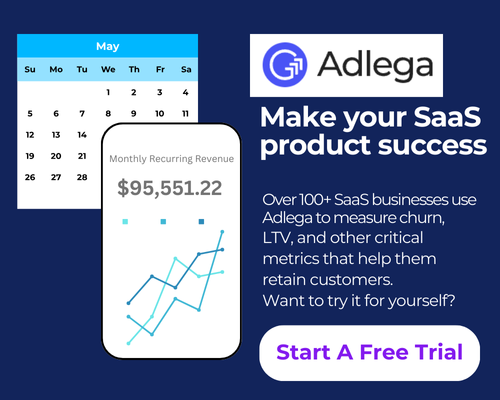
In today’s competitive SaaS landscape, transparency isn’t just a buzzword—it’s becoming a powerful business strategy. Building in public means sharing your startup journey openly with your audience: the good, the bad, and everything in between. This approach is revolutionizing how founders connect with users, build communities, and accelerate growth.
For SaaS founders looking to stand out, build genuine connections, and create a loyal following, the “build in public” movement offers a refreshing alternative to traditional closed-door development. But what exactly does it mean to build in public, and how can you implement this strategy effectively for your startup?
In this comprehensive guide, we’ll explore the benefits, challenges, and practical steps for SaaS founders to successfully build in public, along with real-world examples from companies that have mastered this approach.
What Is “Build in Public”? Definition and Core Concepts
Building in public refers to the practice of openly sharing your startup’s journey, including development processes, business metrics, successes, failures, and learnings with your audience in real-time. Unlike traditional business approaches that keep strategic information private, the build in public methodology embraces radical transparency.
Key Components of Building in Public:
Product Development Transparency: Sharing roadmaps, feature updates, and development challenges
Metric Transparency: Revealing key business metrics like revenue, user growth, and churn
Decision-Making Transparency: Explaining the reasoning behind important business decisions
Failure Transparency: Openly discussing setbacks and what you’ve learned from them
Learning Transparency: Sharing insights and knowledge gained throughout your journey
This approach turns your business journey into an ongoing, public narrative that audiences can follow, engage with, and even influence.
The Business Case for Transparency: 7 Benefits of Building in Public
1. Accelerated Community Building
When you share your journey authentically, you attract people who resonate with your mission and values. Buffer, a social media management platform, has been sharing their metrics, salaries, and company decisions publicly since 2013, resulting in a highly engaged community that champions their product.
2. Enhanced Product-Market Fit
By involving your audience in your product development process, you gain valuable feedback early and often. This continuous feedback loop helps you iterate faster and build features your customers actually want.
3. Established Authority and Trust
Transparency builds credibility. When potential customers see you openly sharing your processes and even mistakes, it creates trust that’s difficult to establish through traditional marketing.
4. Free Marketing and Organic Growth
Your journey becomes your content strategy. Each milestone, learning, or setback is an opportunity for creating engaging content that resonates with your audience and attracts new followers.
5. Accountability and Motivation
Publicly stating your goals creates accountability. Knowing your audience is watching can provide the extra motivation needed to push through challenging periods.
6. Attracting the Right Investors and Partners
Investors and potential partners get a transparent view of your business, attracting those who genuinely believe in your vision and approach.
7. Differentiation in a Crowded Market
In markets saturated with similar products, how you build your business can become a significant differentiator. Your transparency can become part of your unique selling proposition.
Real-World Success Stories: SaaS Companies Thriving with Public Building
Pieter Levels (Nomad List)
Pieter Levels built multiple successful products, including Nomad List, while sharing every step of his journey on Twitter. He regularly shares his revenue metrics, development processes, and business decisions, building a substantial following and establishing himself as an authority in the bootstrapped startup space.
Arvid Kahl (Feedback Panda)
Arvid Kahl and his partner built and sold FeedbackPanda for a seven-figure sum while documenting their entire journey. This transparency not only helped them build their business but also established Arvid as a trusted voice in the bootstrap community, leading to successful books and courses after the exit.
Ghost
Ghost, an open-source publishing platform, operates as a non-profit foundation and publicly shares all their metrics, including revenue figures, operating costs, and user growth. This transparency has helped them build trust with their community and grow sustainably.
Gumroad
Sahil Lavingia, founder of Gumroad, regularly shares detailed metrics about his business, including monthly revenue reports and key decisions. This approach has created a strong community around Gumroad and positioned Sahil as a thought leader in the creator economy space.
The Transparency Spectrum: Finding Your Comfort Level
Building in public exists on a spectrum, and finding the right balance for your business is crucial. Here’s how to determine your optimal transparency level:
Full Transparency
All metrics shared (revenue, churn, user numbers)
Complete product roadmap visibility
Open discussion of failures and challenges
Public salary information
Open decision-making processes
Moderate Transparency
Selected metrics shared (growth percentages rather than absolute numbers)
General roadmap direction without specific timelines
Curated stories of challenges and how they were overcome
Insights into company culture without sensitive details
Explanation of key strategic decisions
Selective Transparency
Growth trends without specific metrics
Announcement of completed features rather than in-progress work
Success stories with limited vulnerability
General company values and philosophy
Results of decisions rather than decision-making processes
Consider factors like your competitive landscape, team comfort, investor expectations, and personal boundaries when determining where on this spectrum your startup should operate.
How to Start Building in Public: A Practical Framework
1. Define Your Transparency Strategy
Before sharing anything, determine:
What metrics and information you’re comfortable sharing
Which platforms you’ll use to share your journey
How frequently you’ll provide updates
Who on your team will be responsible for sharing
What information remains private (customer data, proprietary technology)
2. Choose Your Channels
Select platforms that align with your audience and content style:
Twitter/X: Great for quick updates, metrics, and daily learnings
LinkedIn: Ideal for more professional insights and business strategy discussions
Dedicated Blog: Perfect for in-depth analyses and comprehensive updates
YouTube: Excellent for visual content like product demos and behind-the-scenes footage
Email Newsletter: Direct communication with your most engaged followers
Discord/Slack Community: Interactive discussions and real-time feedback
3. Develop a Content Calendar
Create a structured approach to sharing:
Weekly metric updates
Monthly deep dives into specific aspects of your business
Quarterly retrospectives on goals and achievements
Ad-hoc sharing of significant milestones or challenges
4. Start Small and Scale
Begin with comfortable levels of sharing and gradually increase transparency as you build confidence:
Week 1-4: Share product updates and development milestones
Month 2-3: Introduce selected metrics without specific numbers
Month 4-6: Begin sharing specific metrics and business challenges
Month 7+: Consider more comprehensive transparency, including revenue or funding details
5. Engage with Feedback
Building in public is a two-way conversation:
Actively respond to comments and questions
Acknowledge and implement valuable suggestions
Thank people for their input, even when you don’t use it
Use feedback to shape your product roadmap
6. Document Your Processes
Create systems to make sharing sustainable:
Templates for regular updates
Automated metric dashboards that can be easily shared
Delegation of transparency tasks among team members
Guidelines for what should and shouldn’t be shared
Common Challenges and How to Overcome Them
Challenge 1: Competitive Exposure
Concern: Sharing too much might give competitors an advantage.
Solution:
Focus on sharing results and learnings rather than proprietary methods
Delay sharing certain information until after implementation
Remember that execution matters more than ideas
Use transparency as motivation to stay ahead through better execution
Challenge 2: Managing Expectations
Concern: Public roadmaps create expectations that might be difficult to meet.
Solution:
Clearly communicate that plans may change
Share the reasoning behind changes when they occur
Consider sharing themes rather than specific features
Use community input to prioritize your roadmap
Challenge 3: Handling Negative Feedback
Concern: Public vulnerability might attract criticism.
Solution:
Develop a healthy relationship with constructive criticism
Create guidelines for engaging with different types of feedback
Use negative feedback as an opportunity to demonstrate how you respond to challenges
Remember that how you handle criticism can build more trust than never showing weakness
Challenge 4: Consistency and Sustainability
Concern: Building in public requires ongoing commitment.
Solution:
Start with a manageable sharing schedule
Create templates and systems to reduce the effort required
Integrate sharing into your existing workflows
Involve team members to distribute the workload
Challenge 5: Sharing Failures
Concern: Admitting failures might damage reputation.
Solution:
Frame failures as learning opportunities
Share what you’ve learned and how you’re improving
Remember that vulnerability often increases rather than decreases trust
Focus on the solution as much as the problem
Measuring the Impact of Your Build-in-Public Strategy
To determine if your transparency efforts are delivering results, track these metrics:
Community Growth Indicators
Follower growth rate across platforms
Engagement metrics (comments, shares, likes)
Community participation in discussions
User-generated content about your product
Business Impact Metrics
Conversion rate from followers to users/customers
Customer acquisition cost for community members vs. other channels
Retention rates for community-sourced customers
Product feedback quality and implementation rate
Brand Authority Measures
Media mentions and coverage
Speaking and partnership opportunities
Industry recognition
Competitor responses to your transparency
Conclusion: The Future of Building in Public
The build-in-public movement represents a fundamental shift in how modern SaaS businesses operate. As digital consumers increasingly value authenticity and connection, transparency is becoming less of a novel approach and more of an expectation.
For SaaS founders, building in public offers a powerful way to stand out in crowded markets, create meaningful connections with users, and build products that truly serve customer needs. While the level of transparency may vary from company to company, the underlying principles of authenticity, community engagement, and shared learning are becoming essential components of successful SaaS businesses.
By starting small, finding your comfort zone, and gradually increasing your transparency, you can leverage the build-in-public approach to accelerate your growth, build a loyal community, and create a more resilient and customer-focused business.
Are you ready to start sharing your startup journey? Remember that authenticity is more important than perfection, and the most powerful connections come from genuine sharing—both successes and challenges.

Leave a Reply